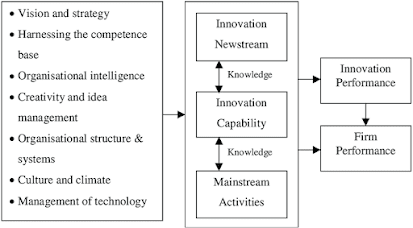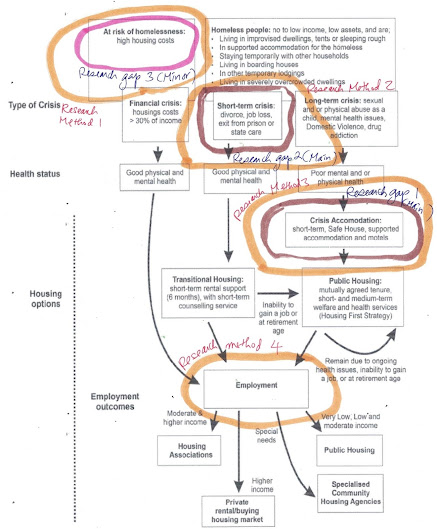The four deliverables of the agile literature review approach (ALRA) for academic-oriented projects (housing studies):
For Housing Studies students to use the agile literature review approach to work on academic-oriente projects, I recommend them to produce the following four deliverables:
Deliverable 1: A research gap-translation diagram: a research gap-translation diagram indicates the endeavor to firm up on the overall research gap (Domain C) about "inadequate usable theories and supportive empirical findings for informing the analysis of the intellectual curiosity of the researcher in Domain A" (Domain A being the triggering point of intellectual curiosity of the researcher). The basic format is as follows:
Deliverable 1 is to be inserted in Chapter 1 [Introduction] of the dissertation report.
Note 1: the theory-based translation process (component B) most likely works from component A to component C [path 1: common], but it might work from component C to component A [path 2: uncommon].
Note 2: the triggering point of intellectual curiosity is most likely located in component A while the gross research gap position statement unavoidably resides in component C.
Deliverable 2: Research gap-objective table: the research gap-objective table states the research gap items of the dissertation project, as arrived at via the research gap analysis.
Research gap-objective table
Research gap items to be addressed (main and minor) | Associated research objectives |
Research gap (main) item 1 | Research objective 1 (main) |
Research gap (main) item 2 | Research objective 2 (main) |
Research gap (minor) item 3 | Research objective 3 (minor) |
Research gap (minor) item 4 | Research objective 3 (minor) |
Etc…. | Etc…. |
# note 1: the dissertation title should mainly capture the concerns of the main research objective(s).
# note 2: research gap items are academic topics/ concepts, variables and variable linkages that are controversial, less than clear (maybe due to their newness), and not adequately supported/ verified by empirical findings in the academic literature. When appeared in the research gap table of the student's dissertation report, they are the ones to be studied in the student's dissertation project.
# note 3: the main research gap items and their associated main research objectives constitute the core-focus-domain of the dissertation project.
# note 4: the research gap-objective table is the output of the preliminary literature review exercise of the student. Subsequently, it is inserted in the dissertation report, chapter 1 (introduction).
# note 5: try to focus on research gaps that imply inadequate attention in the academic literature to one to three closely related contemporary business issues, either (i) broadly or, better still, (ii) for a specific background setting.
Deliverable 3: Theoretical framework-A: Theoretical framework-A consolidates and organizes the main concepts and variables gathered from the student's literature review. The theoretical framework should also indicates the location of the research gap items as the theoretical framework is driven by the research gap items (re: the research gap table) as chosen by the student. Theoretical framework-A is the output of the evolutionary prototyping (and intellectual learning) process of literature review carried out by the student. Subsequently, it is inserted in the dissertation report, Chapter 2 (literature review). The following theoretical framework-A is illustrative:
Theoretical framework-A
## note 1: In the dissertation report, Chapter 2 (literature review), the student needs to examine the items, the item linkages and the research gap items in the theoretical framework-A with explicit reference to the relevant academic references (possibly with a few nonacademic references to capture some idiosyncratic nature of the theoretical framework in response to the specific research topic background of this dissertation project).
Deliverable 4: Theoretical framework-B: Theoretical framework-B is theoretical framework-A with mapped-on research methods. It is the output of the research methodology formulation exercise by the student. Subsequently, it is inserted in the dissertation report, Chapter 3 (research methodology). The framework is illustrated in the following diagram:
Theoretical framework-B
Regarding the theoretical framework-B above, research method 1 is interview research; research method 2 is questionnaire survey; research method 3 is observational research; research method 4 is desk research. Finally, research method 5 is also desk research.
It is quite possible that students may come up with some additional diagrams and tables to present their research ideas. As an agile (lightweight) approach, the writer deems it appropriate to offer the most basic deliverables (in total 4 deliverables) vital for employing the ALRA in this regard.

























